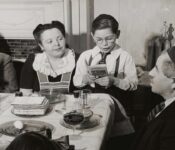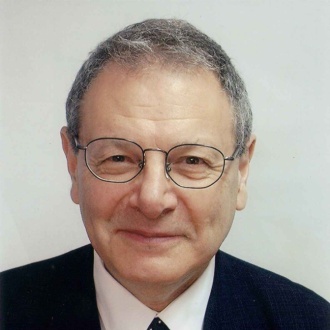Tazria: Arab Spring
The Source of the Wave
The wave of unrest, dubbed Arab Spring, that spread across the Middle East n the spring of 2011 is commonly traced to Mohamed Bouazizi, a poor Tunisian street vendor, who set himself on fire in December, 2010, to protest police harassment. Mohamed’s desperate suicide sparked outrage on the streets of Tunisia, followed by a revolution that toppled governments in Tunisia and Egypt and continues to threaten others.
a poor Tunisian street vendor, who set himself on fire in December, 2010, to protest police harassment. Mohamed’s desperate suicide sparked outrage on the streets of Tunisia, followed by a revolution that toppled governments in Tunisia and Egypt and continues to threaten others.
In my view, the Arab Spring was sparked much earlier, in June, 2009, when thousands took to the streets of Iran to protest election results, widely perceived to be rigged. The protests were limited in scope and ultimately unsuccessful, but they ignited the essential human quest for freedom and showed the world it is possible. They planted a seed that took eighteen months to germinate and finally sprout in Tunisia.
The Beginning of Healing
I base this assessment on a Torah teaching about a skin lesion called Tzaraat. In Biblical days, one who found a lesion on the skin approached the priest for diagnosis. If the priest determined that the lesion fit the criteria outlined in the Torah the patient was quarantined for seven days. If the lesions expanded at the end of this term the patient was declared impure, if they shrunk the patient was declared pure.
However, consider the following rule: if the lesions spread to encompass the entire body, the patient was declared pure. Why is this so? If a slight expansion was a sign of impurity, an expansion that encompassed the entire body should surely have been a sign of impurity.
Some explained this curiosity by comparing the diagnostic analysis to that of a feverish patient. So long as the patient is lethargic, the fever is strong, but when the patient breaks out in sweat and grows uncomfortable the fever has broken and healing can begin. Similarly, so long as the lesions cover a small part of the body it is a sign of Tzaraat, but once they spread across the entire body, the Tzaraat is on its way out and healing is not far behind. (1)
The Spiritual Connection
The lesions were a sign of impurity and disconnect from G-d. When a Jew developed a legion it was a sign that he had strayed from the path of Torah and indulged in sin. The further the legions expanded the further was the distance between the Jew and G-d. However, once the legions spread to the entire body the Jew had reached the lowest point from which there is nowhere to go, but up.
At this point the Jew should, by all rights, have been as far from the Jewish community as possible. That he appealed to the priest for a spiritual diagnosis was a sure sign of his unbreakable bond with G-d. (2)
So long as he was moderately connected to the community we couldn’t attribute his presence before the priest to his bond with G-d. We couldn’t be sure if he is there on account of G-d or because of his ties to the community. Only when the impurity spread throughout his body, and his connection to Judaism should have completely severed, did we find in his presence before the priest evidence of his immutable bond with G-d. It is ironic, but true; at his lowest point of impurity, his intrinsic connection with G-d shone most powerfully.
20/20 Eye Sight
This helps to explain why perfect eyesight was required of the priest, who performed this particular diagnosis. If his vision was even slightly impaired he was not fit to diagnose the condition. The Torah did not explicitly mention this requirement for any of the other Tzaraat diagnoses, why was this one singled out? (3) (4)
In light of the above, the explicit mention in this case makes sense. In this case the sign of purity was not immediately discernible. On the surface the symptoms pointed to an intensification of the lesions, which implied a diagnosis of impurity. It was only beneath the surface that a subtle, yet transformational, point asserted itself. To discern this pivotal point, the priest needed perfect eye sight; not only physical eye sight, but also mental acumen and spiritual perception.
Spontaneous Prostration
A modern day example of this can be found in prayer. Our sages spoke highly of Jews whose bodies bow of their own accord, when reciting the Amidah prayer. (5) On the surface this does not sound complimentary. Rather than concentrating on their prayer and being mindful of the G-d to whom they pray and thus bow with a full heart, they bow out of habit. Why is this laudable?
The answer only becomes obvious when we dig beneath the surface. If these Jews prayed out of religious fervor and spiritual passion one might have argued that they prayed because they enjoyed the experience, but Jews who are apathetic enough to ignore G-d during prayer have no real reason to pray. Why then do they pray? Only because of their intrinsic bond with G-d that can never come undone. So ingrained is it in them that they prostrate without thinking every time they utter G-d’s name. (6)
Genesis of the Arab Spring
This analysis can also be applied to the wave of revolution that swept the Middle East. Of all the dictators that oppress their people, the Mullahs in Iran are the worst. If there were any country in the world, where one would not expect even the softest stirrings of revolt it would be Iran. Yet it was precisely in Iran, where was revolt first fomented.
Why did Iranian citizens revolt if they knew they would be crushed? They could not have naively believed they would succeed in their first run. They could not have hoped to get away with it. They must have known precisely what to expect, but they revolted anyway.
It is true that this revolt was quickly put down and the Mullahs control, immediately reasserted. Yet the very fact that the voice of opposition was heard on the Iranian street underscored a stirring of a spirit so powerful as to be indomitable; the essential human quest for freedom. Across the region people took note and filed it away for future use in the Arab Spring. If Iranian dissidents could speak up under such harsh conditions, they would certainly be able to do so under their own somewhat softer conditions. Indeed, when conditions were ripe they rose up en mass.
The Iranian revolt might have been too small to measure on the Richter scale, it might have produced no measurable results in Iran, but it touched off a storm, the consequences of which, historians will continue to examine for generations. (7)
Footnotes
- Ibn Izra in his commentary to Leviticus 13: 13.
- This is akin to a point frequently made by Rabbi Manis Friedman about a Jew in Shull on Rosh Hashanah. You might ask him if he believes in G-d and he will hem and haw, yet if you ask him why he is in Shull if he doesn’t believe in G-d, he will raise his eyebrows and say, what do you mean, its Rosh Hashanah!
- Actually priests with impaired vision were never permitted to diagnose Tzaraas (Maimonides, Hilchos Tumas Tzoraas 9:5), but the fact that this was pointed out explicitly in this diagnosis rather than others is instructive and begs for an explanation.
- This question becomes even more compelling when we note that the priest need not even be proficient in the laws of Tzaraat (Maimonides, Hilchos Tumas Tzoraas 9:2),. So long as an expert examines the patient and instructs the priest on what to say, the priest may declare the patient pure or impure. Under these conditions why is it necessary for the priest to have any vision at all?
- Jerusalem Talmud, Brachos, 2:4.
- A story is told of Reb Levik of Bardichev’s students, who complained to him about a peasant who oiled the wheels of his wagon while he prayed. Reb Levik replied that the reverse is true. Even while he oils the wheels of his wagon, this Jew prays.
- This essay is based on Toras Menachem, 5748, v.3, pp.248-243.
Tags: Arab Spring, Spirtual Healing

























